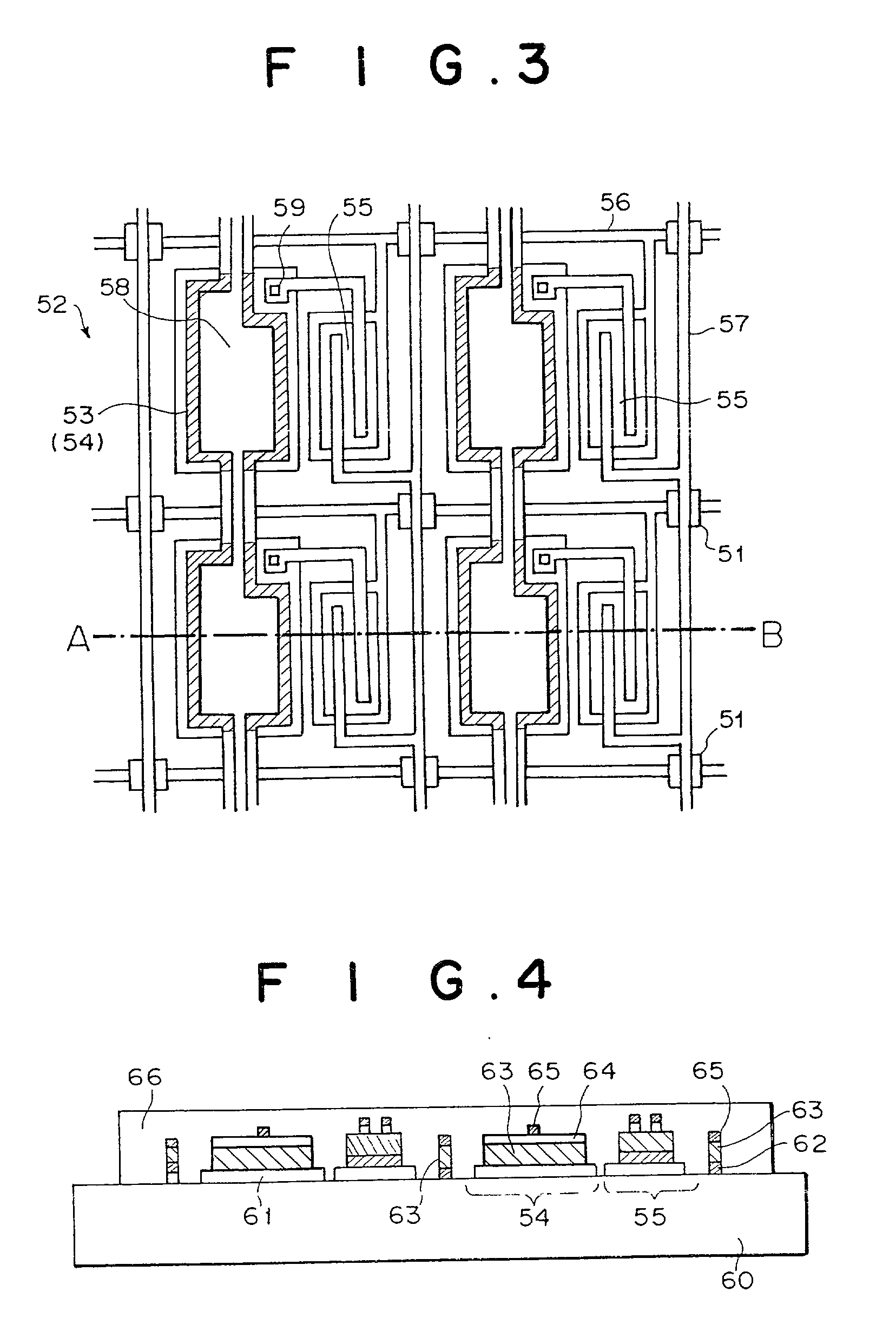Solid-state radiation detector in which signal charges are reduced below saturation level
a solid-state radiation detector and signal charge technology, applied in the field of radiation detectors, can solve the problems of radiation producing quantization noise, high radiation through material transmission, and increasing the amount of fluorescent light emitted from the scintillator
- Summary
- Abstract
- Description
- Claims
- Application Information
AI Technical Summary
Benefits of technology
Problems solved by technology
Method used
Image
Examples
concrete examples
[0071] Concrete examples of the solid-state radiation detectors according to the present invention are indicated below for various amounts of the radiation dose. In the following examples, the solid-state radiation detectors include a typical CsI:Tl scintillator and a typical photoelectric conversion element containing Si as a main component, the capacitance C of the capacitor portion of each photoelectric conversion element is 2 pF, the voltage V applied to each photoelectric conversion element is 5 V, the maximum storable charge amount Q is 6.times.10.sup.7e (where e is the elementary charge), the number L of photons which constitute fluorescent light emitted from the CsI:Tl scintillator in response to each radiation quantum is 2,000, the entrance efficiency T is 80%, the fill factor F of each photoelectric conversion element is 70%, and the photoelectric conversion efficiency .eta. of each photoelectric conversion element is 80%.
case 1
[0072] (1) Case 1
[0073] In the case 1, the radiation dose is 10 mR, and the number X of radiation quantums received in each pixel is 7 .times.10.sup.4.
[0074] (1-1) First Method (Use of Light Absorbing Member)
[0075] According to the first method, an optical filter as the aforementioned light absorption member 49 is arranged between the scintillator 41 and the solid-state radiation detector 42, where the optical filter realizes an entrance efficiency T of 50%. In this case, the amount Q0 of charges generated in each photoelectric conversion element becomes Q0=X.multidot.L.multidot.T.multidot.F.multidot..eta.=3.9.-times.10.sup.7, which is not greater than the maximum storable charge amount Q=6.times.10.sup.7. That is, the aforementioned relationship Q0=X.multidot.L.multidot.T.multidot.F.multidot..eta..ltoreq.Q is satisfied.
[0076] (1-2) Second Method (Doping Control)
[0077] FIG. 6 is a graph indicating an example of the wavelength-light emission characteristic of a scintillator and examp...
case 2
[0083] (2) Case 2
[0084] In the case 2, the radiation dose is 100 mR, and the number X of radiation quantums received in each pixel is 7 .times.10.sup.5. In this case, the aforementioned relationship cannot be satisfied by only one of the above three methods. Therefore, a light absorbing member 49 is arranged between the scintillator 41 and the solid-state radiation detector 42, and the film thickness of the a-Si:H photoelectric conversion layer 63 is reduced. For example, when the light absorbing member 49 is arranged so as to achieve an entrance efficiency T of 20%, and the film thickness of the a-Si:H photoelectric conversion layer 63 is reduced, the amount Q0 of charges generated in each photoelectric conversion element becomes Q0=X.multidot.L.multidot.T.multidot.F.multidot-..eta.=1.times.10.sup.8, which is not greater than the maximum storable charge amount Q=1.2.times.10.sup.8. That is, the aforementioned relationship Q0=X.multidot.L.multidot.T.multidot.F.multidot..eta..ltoreq....
PUM
 Login to View More
Login to View More Abstract
Description
Claims
Application Information
 Login to View More
Login to View More - R&D
- Intellectual Property
- Life Sciences
- Materials
- Tech Scout
- Unparalleled Data Quality
- Higher Quality Content
- 60% Fewer Hallucinations
Browse by: Latest US Patents, China's latest patents, Technical Efficacy Thesaurus, Application Domain, Technology Topic, Popular Technical Reports.
© 2025 PatSnap. All rights reserved.Legal|Privacy policy|Modern Slavery Act Transparency Statement|Sitemap|About US| Contact US: help@patsnap.com



